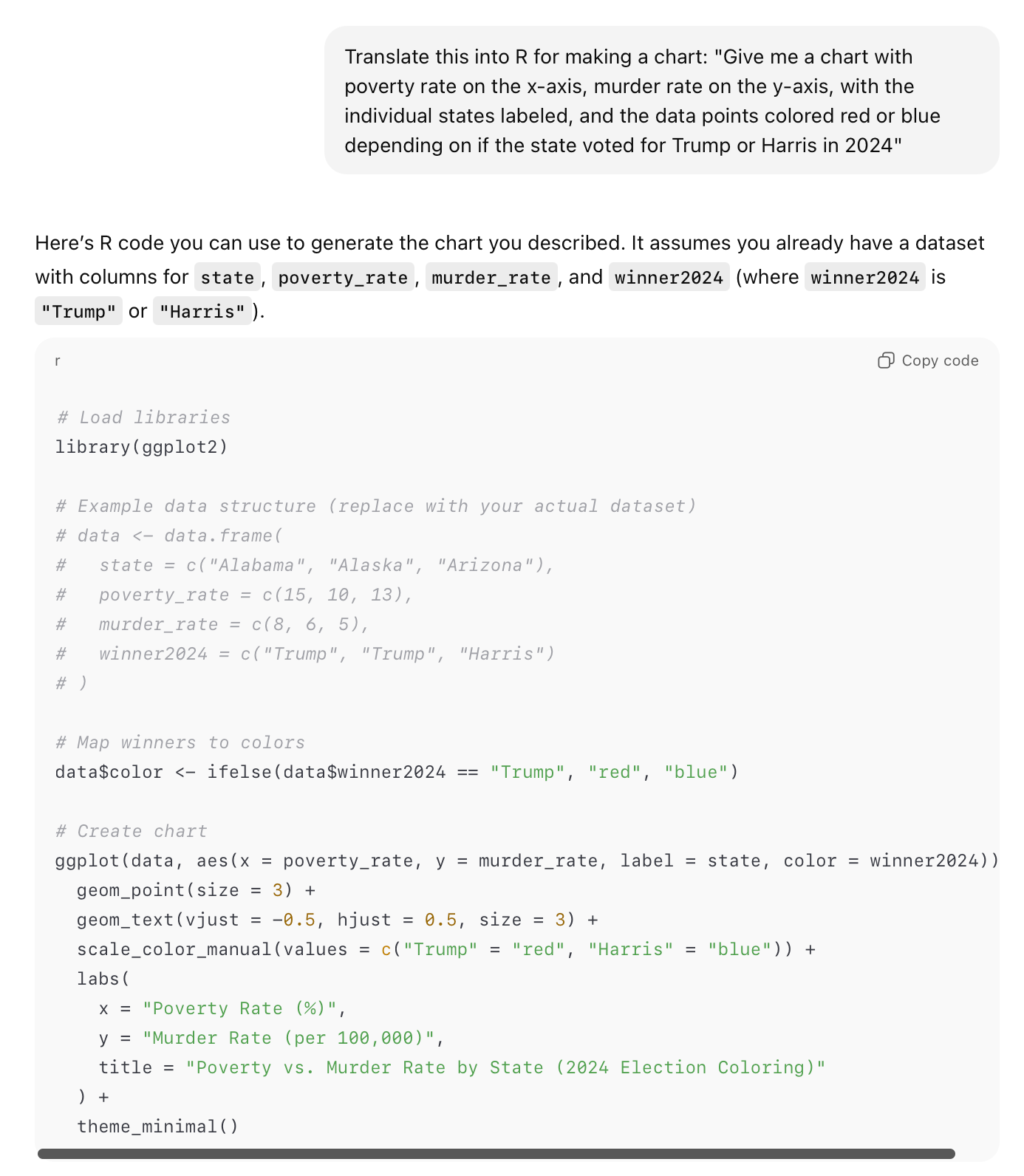Developer Offer
Try ImaginePro API with 50 Free Credits
Build and ship AI-powered visuals with Midjourney, Flux, and more — free credits refresh every month.
How I Boosted My Writing Output By 33 Percent Using AI
While some speculate on the long-term risks of artificial intelligence, my immediate experience has been one of massive productivity gains. I estimate that by leveraging AI to handle the grunt work of writing and research, I'm producing an extra article per week—a 33% increase from three to four. Beyond quantity, the quality has improved, with fewer typos and more robust analysis. If these gains were extrapolated across the economy, the potential for wealth creation would be enormous. Although my work, which involves synthesizing text-based information, is an ideal use case for AI, even a fraction of this boost in other industries would be transformative.
From Hours of Coding to Instant Charts
One of the most significant time-savers has been in data analysis and visualization. In a recent article on partisanship and crime, I created several figures that would have previously taken hours. In graduate school, we spent significant time learning programming languages like R and Stata just to produce a simple bar graph. Tweaking labels, colors, or regression lines meant memorizing specific commands or navigating complex menus, a process that required re-learning each time.
With AI, this has become as simple as a conversation. I can upload a spreadsheet and type a command in plain English, such as: “Give me a chart with poverty rate on the x-axis, murder rate on the y-axis, with the individual states labeled, and the data points colored red or blue depending on if the state voted for Trump or Harris in 2024.” The result is almost instantaneous.
For instance, feeding that instruction into ChatGPT to generate R code produced this:

While the AI can make mistakes that require correction, fixing them is far easier than debugging code from scratch. This technology effectively replaces the need for a research assistant for these tasks. It automates the tedious coding work, freeing social scientists to focus on analysis and interpretation rather than syntax.
Revolutionizing the Research Process
AI has also become an indispensable tool for efficient research. Previously, writing a historical narrative, like a section on the Arab Spring for my upcoming book, required painstakingly gathering individual facts. I would have had to search for dates like “When did Mubarak resign?” or “When did protests in Libya start?” and then piece the timeline together myself.
Now, I can simply ask ChatGPT for a complete timeline highlighting the specific events I need. This automates the boring parts of writing while preserving the creative and analytical work. It’s not about not knowing the general sequence of events, but about getting the precise details right without spending hours on manual lookups.
Your Personal AI Tutor for Complex Subjects
AI is a phenomenal tool for learning. As I've been studying macroeconomics with textbooks like Mankiw’s Principles of Macroeconomics and Scott Sumner’s The Money Illusion, I've used ChatGPT to clarify concepts. By screenshotting a page and asking for an explanation, I often get a clearer summary than the author provides, with the ability to ask follow-up questions for deeper understanding.
This raises the question of whether we need textbooks at all for foundational knowledge. Learning directly from an interactive AI seems more efficient than reading a static text, even if it feels like cheating. For unique arguments, like Sumner’s, engaging with the author's original words is still valuable, but AI can supplement that by providing background context and clarifying complex ideas.
Mastering Academic Debates Instantly
I frequently engage in a running dialogue with ChatGPT to build my knowledge base on topics of interest. For example, to verify a claim that China’s growth slowed at a lower wealth level than other East Asian tigers, I simply asked the AI instead of spending hours gathering data. I often cross-reference the output in a new chat to ensure accuracy. This process helps me connect ideas for future articles.
ChatGPT is also excellent for understanding academic debates. Instead of reading multiple papers from opposing sides and trying to synthesize them, I can ask the AI to summarize the debate for me. It provides tailored, accessible explanations, unlike academic writing which can often be dense and opaque. It has replaced the old method of emailing an author with a question and hoping for a response.
Polishing the Final Product
Finally, AI assists with the basics of writing: fact-checking, spelling, and grammar. A simple copy-paste and a clear instruction are all it takes. What was once a weak point for AI has now become a reliable tool, on par with dedicated software like Microsoft Word. This not only helped me write more articles but also allowed me to complete the first draft of my latest book in just six months.
This raises a final question: if AI can do all this, is a writer like me even necessary? While current models still struggle to capture my specific voice and views, it seems plausible that an AI could one day be trained on my work to produce articles in my style. For now, it seems AI can impersonate a midlevel writer but not a great one—a thought that, for the moment, is good for my ego.
Compare Plans & Pricing
Find the plan that matches your workload and unlock full access to ImaginePro.
| Plan | Price | Highlights |
|---|---|---|
| Standard | $8 / month |
|
| Premium | $20 / month |
|
Need custom terms? Talk to us to tailor credits, rate limits, or deployment options.
View All Pricing Details

